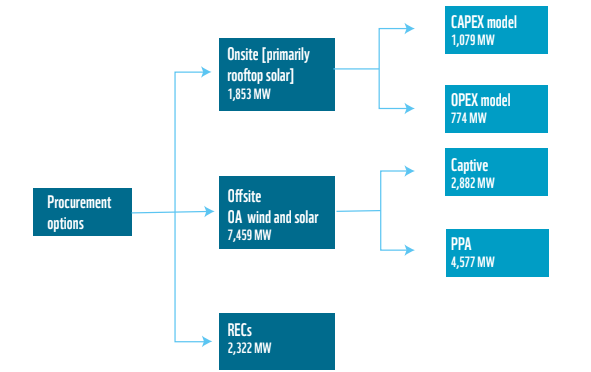According to a recent WWF-BRIDGE TO INDIA report, Commercial & Industrial (C&I) consumers account for 64 per cent of total electricity consumption worldwide, but only 3.5 per cent1 of total renewable power consumption.
In India, the respective C&I numbers are 51 per cent3 and 3 percent for FY 2018. As part of a stronger Climate Action Plan, India has committed to increase renewable energy (RE) capacity from 175 GW in 2022 to 450 GW by 2030.
C&I consumers in India are increasingly looking to procure renewable energy for financial and environmental reasons. They can not only make attractive savings of around 30-60 per cent on grid power, but also reduce carbon emissions and comply with Renewable Purchase Obligations (RPO).
Currently, the avenues available to C&I consumers to procure renewable power are limited to rooftop solar installations, open access solar and wind power, and RECs. However, even these options are not freely available because of various policy and market constraints.

With the growing C&I renewable power market worldwide, many new alternative procurement options have opened up.
Virtual power purchase agreements (VPPAs), green tariffs, internationally tradable RECs (I-RECs) have already been successfully tried and tested in many countries. There are also proposals to set up dedicated renewable power exchanges and facilitate peer-to-peer (P2P) trading.

The preliminary findings of the report indicate that green tariffs, renewable power exchange and I-RECs are relatively easier to implement compared to the other options.
However, a collaborative effort to undertake pilot programs and consumer awareness initiatives is needed to build market confidence and accelerate the drive to increase renewable power consumption by C&I consumers.
Greater adoption of clean energy by C&I consumers is critical for meeting the national renewable energy and climate change commitments.
This story is based on BRIDGE TO INDIA research






